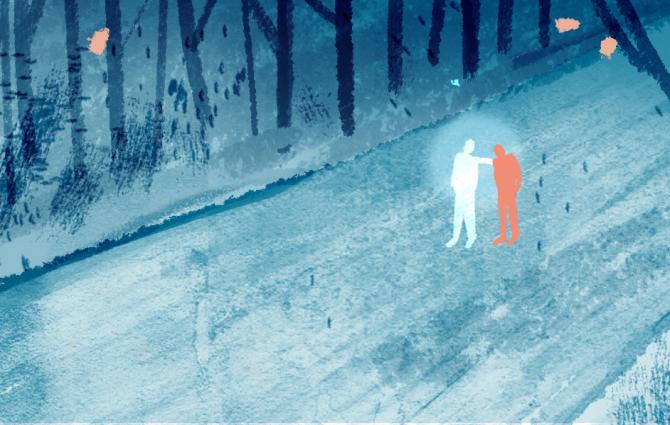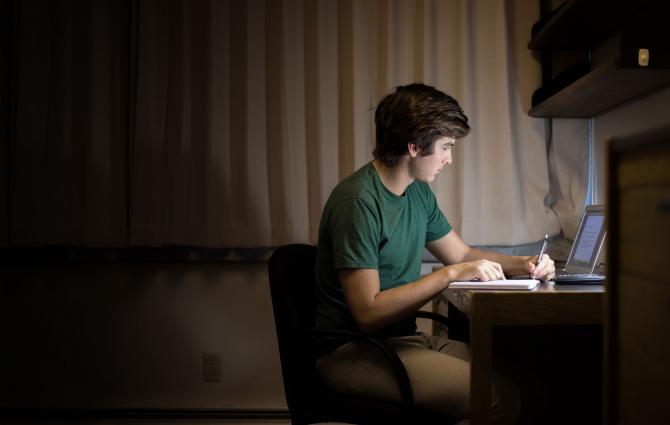It’s not hard to see that UBC is constantly changing—spend a couple years on campus and you’ll see buildings fall and rise, fashion trends come and go, and thousands of new faces every fall.
Though I’ve seen UBC grow a lot over the past few years, I was still curious to see how student life had developed more broadly through the decades. What did it mean to be a student in eras past?
To find out, I dove into UBC’s extensive archives, which are composed of photographs, documents, and even old issues of The Ubyssey! (In case you haven’t had the chance to read it, The Ubyssey is UBC’s official, independently-run student newspaper. It’s been celebrating and investigating student life at UBC since 1918!)
Now, UBC may be relatively youthful compared to some other major universities of the world (the University of Oxford has been operating in some form for more than 900 years), but there’s still a century of history one can mine through.
I’m only addressing a small part of that history in this post, but what struck me was how much larger and more diverse the UBC community has become through the years. And, as UBC has grown, the archives show the ways in which students have become increasingly passionate about tackling local and global issues.
Keep reading to see how student life at UBC has evolved from humble beginnings into the incredible, dynamic, and outspoken community we have today:
The 1920s: UBC students cultivate a community
UBC’s Point Grey campus opened in 1925, so I decided to look at archival material from that point onward. This gave me an idea of what student life was like as UBC became a full-fledged institution with its own campus.
UBC started small, with only about 2,000 students in 1925. These students, the majority of whom were men, mostly came from local families with modest incomes and working-class jobs—UBC was the place they could pursue their aspirations for a bright future. Though courses were initially offered mainly in subjects relating to agriculture and forestry (sectors forming much of British Columbia’s economy at the time), new degrees like social work emerged as the 20s progressed.

Archival copies of The Ubyssey from the 20s provide a fascinating look into student life at the time. Did you know that clubs like the Debate Society and the Players Club have been operating since then? And as the young university found its footing, students were debating how to maintain justice on campus and how UBC could best produce responsible citizens—a headline from 1928 asked “Has the Honor System Failed?” For what it’s worth, The Ubyssey believed that students should have had a say in what the university laws were!
The prices for items advertised within the pages might make you groan in envy—$35 for a tuxedo and $8.95 for a women’s knitted wool suit in 1929 (though that works out to $520 and $133, respectively, in 2020 dollars)!
Finally, here’s a “joke” from a 1929 issue:
They were seated at a table in a night club. Suddenly, there was a loud crash.
“Come,” he said, taking her hand, “let’s dance.”
“Don’t be foolish,” she answered, “that wasn’t the orchestra. The waiter dropped a tray of dishes.”
...Hilarious?

Though this may have been an unassuming start for a small university that seemed mostly concerned with their little slice of the world, UBC would soon take the stage as one of Canada’s most prominent universities.
Check out this Instagram post to see some photos of the bus stops at UBC from the 1920s until now (yes, UBC students have been bussing to campus for a century!):
The 1950s and 60s: UBC students find their voice
Next, I looked at UBC in the 50s and 60s—decades that brought new ideas to campus as calls for gender and racial equality grew louder and students questioned tradition.
Following the tumult of the Second World War, UBC grew rapidly, expanding from 8,000 students in 1950 to more than 28,000 in 1969. This post-war boom brought new faculties, including law, medicine, and pharmacy, and a swath of new buildings across campus. There also came an enormous shift in social attitudes, especially with the entry of the baby boomer generation in the 1960s.

This shift in attitudes is exemplified by American activist Jerry Rubin's visit to the campus in 1968. Encouraging students to question authority and tradition, Rubin asked the large group of students in attendance if there was somewhere they weren’t allowed on campus.
Rubin and the students then headed to the profs-only Faculty Club to “liberate” it—driving most of the professors out and taking over the Club for the next 24 hours. Drinking and partying ensued with the aim of showing the university establishment that this generation had far different views of authority than those that came before them.




Throughout the 60s, The Ubyssey increasingly reflected students’ desire for reform as they took on local and global issues. Criticizing racism in Canada, Apartheid in South Africa, and the US military draft, issues of the newspaper from the 60s show how vital student voices are in fighting injustice in the world.
It wasn’t all serious, though. Issues from the 50s and 60s illustrate some of the quirks and movements from the time—a September 1957 issue advertises a “Frosh Calendar” full of events like “tea dances,” “bonfire rallies,” and a day where “regalia is compulsory” (whatever that means). Students were buying typewriters for $104.50 in 1957—in 2020 terms, this is just a bit less than $1,000, which seems like a deal when I think about how much my laptop was.
Take a look at these photos of UBC student residences through the years—there are pics from the late 50s when Place Vanier residence was brand-new!
The 1970s and 80s: UBC becomes a modern, global institution
Finally, I looked through archival material from the 70s and 80s, decades that continued to bring a lot of progress to UBC, particularly for the women who enrolled.
In 1974, women outnumbered men in first-year registrations for the first time since the First World War, and in 1976, the Academic Women’s Association was founded to encourage equal participation and opportunity for women across campus. Around that time, UBC also became the first Canadian university to offer a Women’s Studies program.

Issues of The Ubyssey I looked at contained a growing focus on women’s involvement and agency on campus. They called for more women representation on university committees, decried psychiatry and the mental health system as “inherently sexist,” and advocated for better awareness of sexual harassment. It was interesting to read these articles and rethink my perception of when certain movements started or ended—the fight for equality is always relevant and never “ends!”


As the 80s progressed, UBC found more recognition on the world stage and it began recruiting more international students. The expanding diversity and reach of UBC were evident in The Ubyssey: for example, LGBTQ+ voices, alongside those of international students, became more prominent, and UBC found itself competing in sports against teams from around the world. (Unfortunately, UBC lost many of them—the headline for the first international men’s volleyball tournament at UBC stated dejectedly, “Koreans too tough”.)
UBC’s vibrant and evolving campus is highlighted in these photos of the Student Union Building over the past 50 years:
It was striking to look through old photos of UBC and see different clothes, hairstyles, and technology on campus. However, they’re a relatively superficial demonstration of just how much can change in 100 years. The real story is how the UBC community has grown from a small school made up mostly of local men to a huge university composed of diverse voices from all over the world.
Thinking about how we’ve all come together actually makes me feel quite optimistic. Despite all the challenges of the last century, we’ve made huge strides, and I look forward to seeing how we tackle the challenges in this next century ahead.
Learning from the past
As I said at the beginning of this piece, I’ve only touched on a small part of UBC’s history to provide an idea of what student life was like in the 20s to 80s. There are many more stories, events, and key moments that could, and should, be recounted.
Hopefully, I’ve piqued your interest to dive into UBC’s history further. We can learn a lot from the past, so if you have a moment, take a look through some old issues of The Ubyssey or the UBC Library’s archival photographs. Learning a little about the past might make you see the present differently!



